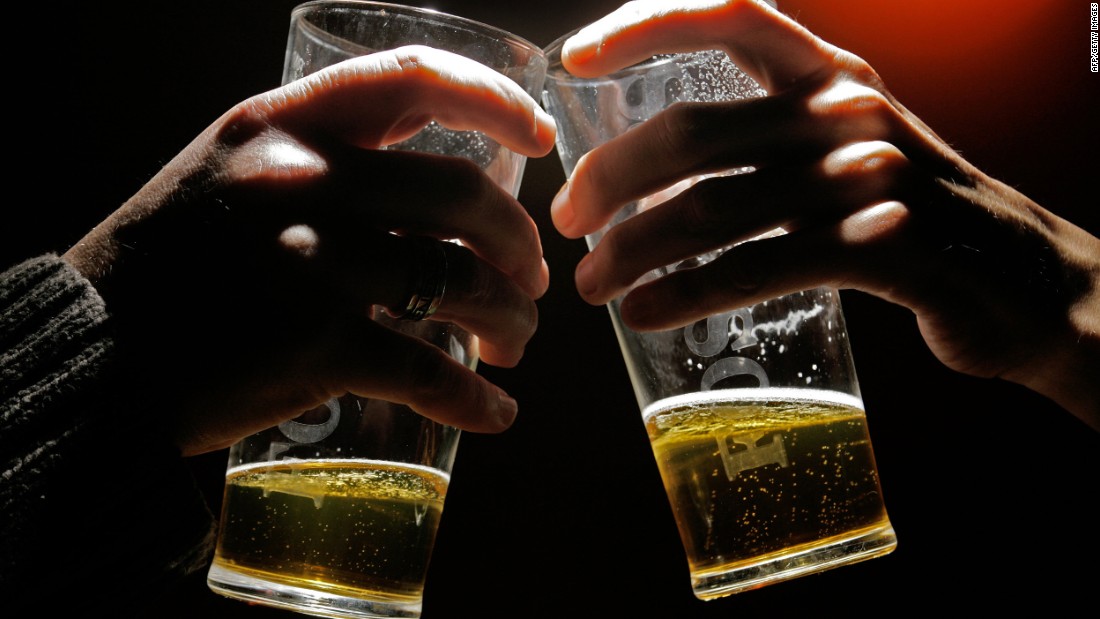(CNN)When teens drink alcohol, they sometimes down eight or more drinks in a short period, according to a new US Centers for Disease Control and Prevention report released Thursday. This happens in spite of overall progress in curbing teen drinking.
From 1991 through 2015, current drinking and binge drinking declined significantly among US high school students, according to the CDC report. The findings are based on the national Youth Risk Behavior survey, which captures trends among high school students. For the study, current drinking is defined as having a drink in the last 30 days.
“We have made some progress from a public health standpoint in reducing current and binge drinking among high school students, but we still have a lot of work to do,” said study author Dr. Robert Brewer, director of the excessive alcohol use prevention team at the CDC. That progress may be the result of tougher ID laws, and a crackdown on drunk driving.
However, in 2015, about one in three high school students reported drinking alcohol during the 30 days before they were surveyed and one in six reported binge drinking.
The National Institute on Alcohol Abuse and Alcoholism defines binge drinking as a pattern of drinking that brings a person’s blood alcohol concentration to 0.08% or above. This typically happens when men consume five or more drinks, and when women consume four or more drinks in about two hours.
The report also noted that many students who binge drink do so at a high intensity. More than two in five binge drinkers consumed eight or more drinks in a row.
Heavy drinking at that level could produce blood alcohol levels four to five times the legal limit, a figure calculated for adults. Students dramatically increase their chance of alcohol poisoning, serious injury, or death when drinking at these escalated rates, according to Brewer.
Among high school seniors, the number of current drinkers was nearly double the number of freshmen drinkers. The number of binge drinkers also increased from the first to last year of high school from 47% to 61.9%.
It starts at home
At home, how parents consume and treat alcohol can play a big role in the child’s tendency to drink. “Of course kids will always do what they’re watching as opposed to what you’re telling them,” Dr. Gail Saltz, a professor of clinical psychiatry at New York Presbyterian Hospital Weill-Cornell Medical College, says. “If you’re telling them not to drink, but you regularly tie one on, that won’t work, period.”
Saltz notes that the right time to talk about alcohol with a child depends on the community you live in. “I do think that you probably have to start having this conversation by the beginning of high school, but that could be different in some areas. You have to know your community. That may even be a middle school conversation depending on what kids are doing and how fast the crowd is moving,” she said.
What happens when those conversations don’t happen? Brewer notes that binge drinking in high school can indicate heavier drinking down the road. “People who start at a younger age often persist in that behavior when they go on to college and beyond that,” said Brewer.
He also noted that young adults are influenced by the drinking culture of those around them. “It’s a two-way street, drinking amongst young people in high school can affect their drinking as adults, and it’s also true that drinking by adults can affect students,” said Brewer.
Not only do adults influence the drinking habits of students, but they are also often the ones who supply the alcohol.
Although drinking by people under the age of 21 is illegal, people aged 12 to 20 years drink 11% of all alcohol consumed in the United States, according to the CDC. In addition, high school students who drank were able to obtain alcohol from others, and binge drinkers often gave money to others to purchase alcohol for them. In most states, purchasing alcohol for minors is considered a felony.
And just because a student isn’t binge drinking doesn’t mean they aren’t causing harm to their body or likely to engage in risky behavior. “The reality is, brains are still developing and drinking before the age 15 or 16 has a very high correlation with developing a problem with alcohol abuse and addiction and that is probably because the brain is really still developing,” said Saltz.
The reality is, teens will continue to drink. Saltz says it’s important that parents put safety over punishment when it comes to drinking and driving.
“Of course you don’t want your child to drink, but if they ever found themselves in a situation if they had been drinking or their friends had been drinking and there was any concern whatsoever, you would always help first and ask questions later,” said Saltz.
For people under 21, Brewer says, “the bottom line recommendation, don’t drink at all.”
source http://allofbeer.com/teen-student-drinking-declines-but-1-in-6-binge-drink-cdc-report-says/



No comments:
Post a Comment